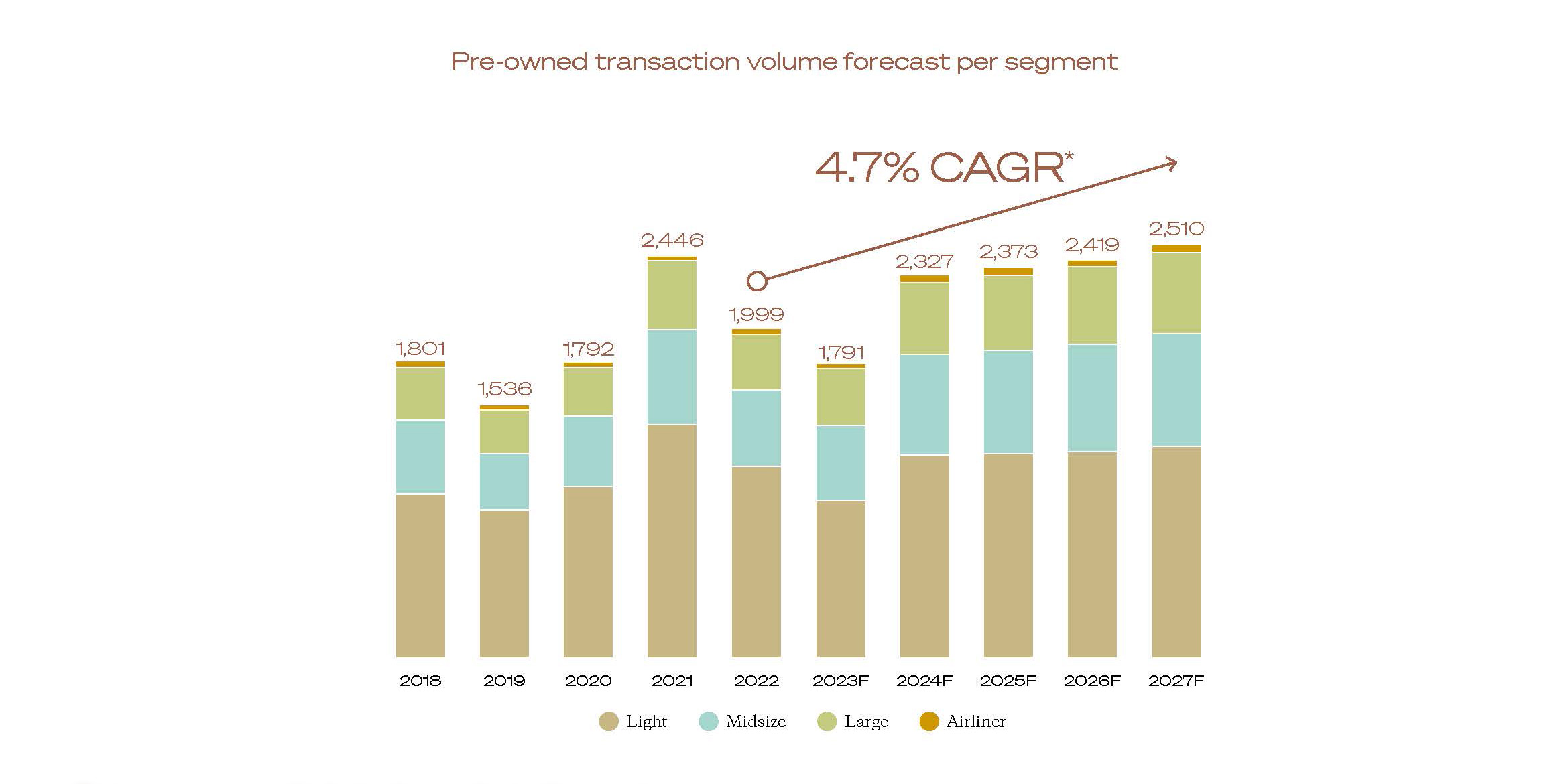Corporate buyers are returning to the business aviation sector in the wake of the coronavirus pandemic, swelling demand and driving up preowned aircraft values, according to Jetcraft’s preowned business jet market forecast released at EBACE 2023. The company's prognostication foresees continued demand in the coming years in both volume and value, despite a market correction in the current year as some business aircraft users that were added during the pandemic returned to using airlines now that the commercial aviation sector has mostly recovered.
Jetcraft reports that transactions reached $16.3 billion last year, with the corporate sector accounting for an increased proportion of 60 percent. “The return of the corporate buyer proves what we’ve always known: the continued importance of face-to-face interactions in the relationship world of business,” said Jetcraft owner and chairman Jahid Fazal-Karim. “Videoconferencing technology served a purpose for all of us when the borders were closed, but business recognizes the value of in-person meetings.”
Added Jetcraft CEO Chad Anderson, “Security and safety are the primary drivers, and a lot of corporations had a ‘no travel’ policy until Covid was effectively overcome.”
With the pandemic ended and long lead times for deliveries of new aircraft, corporate operators have come to the preowned market.
Also on the rise are second-hand aircraft prices, which rose by 38 percent in 2022. This comes as a result of new entrants to the market, the return of corporate customers, and OEM delivery backlogs. 
Looking forward, Fazal-Karim sees a bright market. “Existing corporate and individual clients looking to upgrade their aircraft will drive sales volume over the next five years. First-time business jet owners continue to play a role in market growth, with many—having tested the waters through charter or fractional ownership—purchasing their aircraft outright.”
From next year, values are predicted to stabilize at about $15.3 billion annually. This is due to an increase in the total transaction volume, with a significant number of light jets being retired from the younger (less than 25 years old) preowned fleet, and a rise in the share of larger jets entering the market.
Other factors affect the complex preowned market. Certain makes and models are more popular than their rivals, in turn escalating their prices, while OEM and maintenance facility backlogs are driving up the desirability of turnkey aircraft that do not require any upgrading.
This is the ninth edition of Jetcraft’s annual report. The U.S.-based brokerage has concentrated on large cabin jets for most of its 60-year history, but this year’s forecast was informed by its purchase in April of brokerage CFS Jets, specialists in light jet and turboprop sales.
“We acquired CFS Jets specifically to give more focus and intelligence in that segment,” said Anderson.
The raw data is taken from all Jetcraft’s global transactions, numbering about 100 per annum (prior to the CFS Jets acquisition), combined with market intelligence acquired in interactions within the broker community and “the street knowledge from our respective offices around the world,” Anderson said. The data is synthesized and the report created by analysts in the company’s London office.
Though economic uncertainty has darkened the tint of the current business aircraft market, Jetcraft sees little affect in the longer term.
“Our industry has gone through several recessions, and as a 60 year old company, we’ve been through more than most,” said Anderson, “and we’re still pretty confident in these numbers, based on the behavior we’re seeing from our buyers.”







